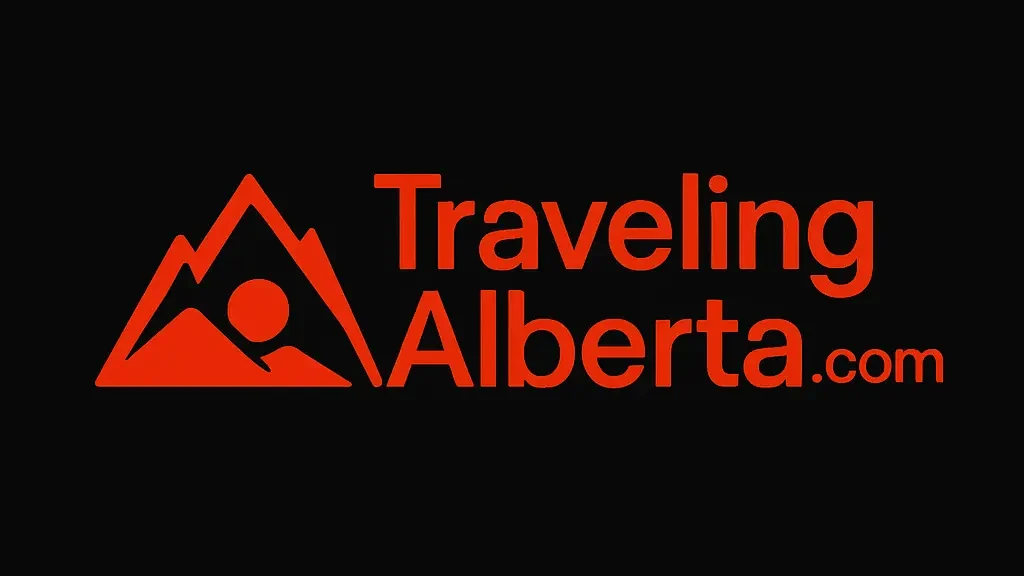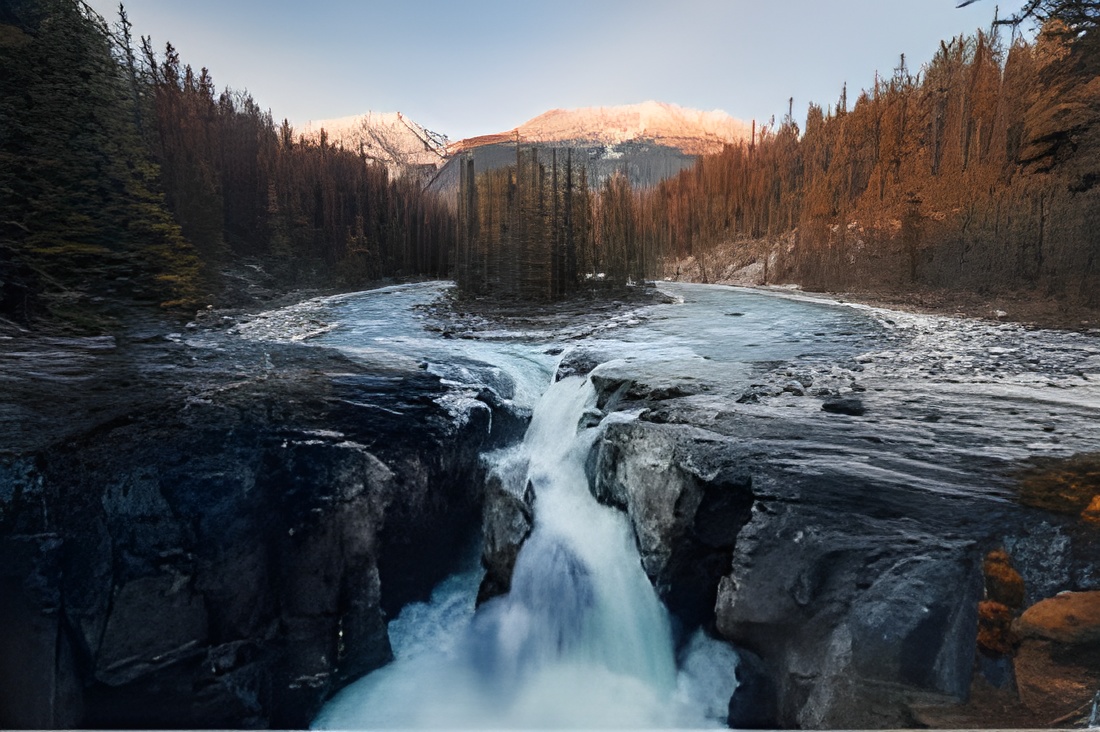Sunwapta Falls is one of the most stunning yet underrated attractions in Jasper National Park, Alberta. Located on the world-famous Icefields Parkway, this dramatic glacial waterfall is surrounded by jagged peaks, dense pine forests, and an untouched alpine landscape that perfectly captures the raw beauty of the Canadian Rockies. While it may not have the international fame of Niagara or Athabasca Falls, Sunwapta offers a more serene, immersive experience.
What makes Sunwapta Falls so unique is that it’s not just one waterfall, but a series of powerful cascades. Fed directly by the Athabasca Glacier, the water surges through a narrow limestone gorge before plunging around 18 meters (60 feet) into a deep canyon. As you stand on the viewing bridge and feel the cool mist hit your face, you realize you’re witnessing nature’s unfiltered power.
Unlike other remote waterfalls, Sunwapta is easily accessible, making it an ideal stop whether you’re planning a quick visit or a longer hiking trip. Whether you’re a solo adventurer, couple, family, or photography enthusiast, this guide will help you plan the perfect visit to one of Jasper’s hidden treasures.
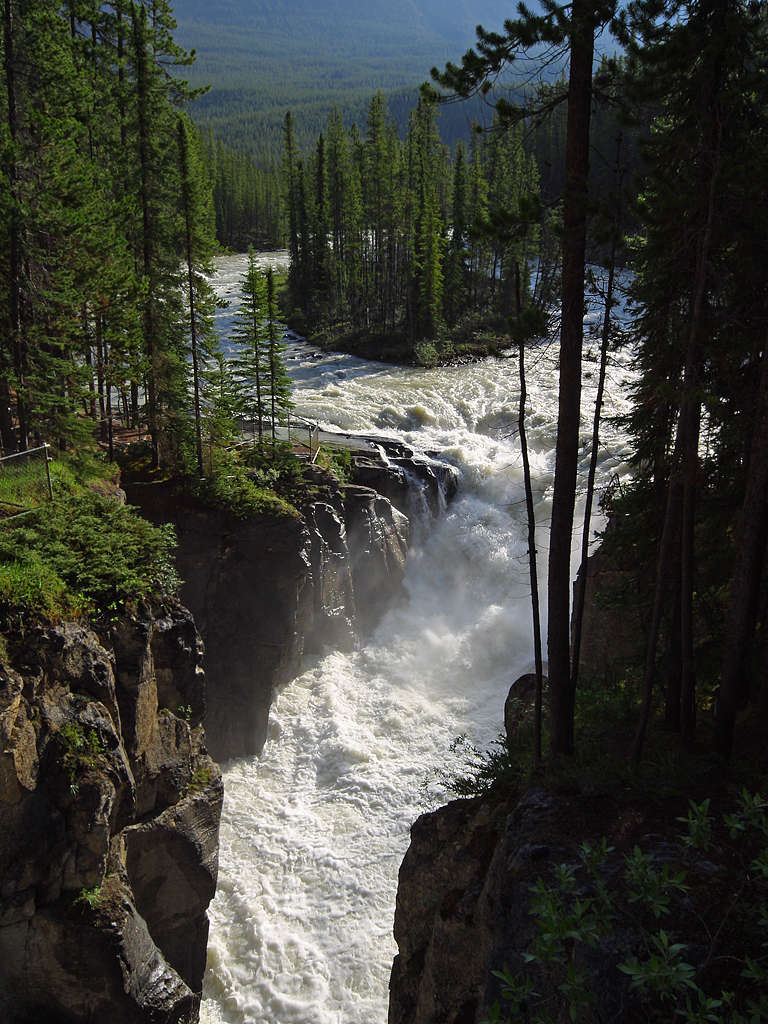
What to Expect at Sunwapta Falls
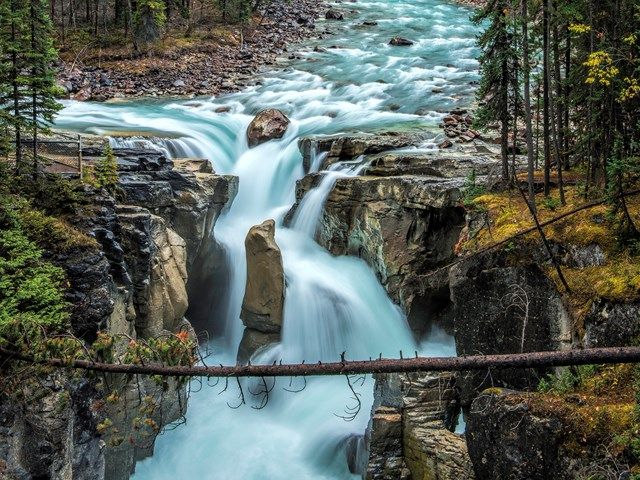
Sunwapta Falls is split into two sections: the Upper Falls, which are easy to access from the parking lot, and the Lower Falls, which require a short hike through the forest. This gives you the best of both worlds—dramatic views within minutes of arrival and a tranquil walk through nature if you want to go deeper.
Upper Sunwapta Falls
This is the most photographed and visited part of the waterfall. A wide, icy blue river flows calmly before suddenly dropping into a narrow canyon, crashing against the rocks below with thunderous energy. There’s a footbridge just a few meters from the parking lot that offers the perfect vantage point, allowing you to see both upstream and directly into the chasm. On a sunny day, you might even catch a rainbow in the mist.
Lower Sunwapta Falls
For those willing to explore a bit more, a 3 km round-trip hike leads to a series of smaller but equally beautiful waterfalls. The trail is relatively easy and winds through a peaceful forest of lodgepole pines. It’s usually quiet, offering the chance to spot wildlife and enjoy the sights and sounds of nature away from the crowds. The Lower Falls are great for photographers looking for different angles and textures.
Both areas are well-marked and maintained, making them accessible for all skill levels. There are also picnic areas, washrooms, and benches nearby.
When Is the Best Time to Visit Sunwapta Falls?
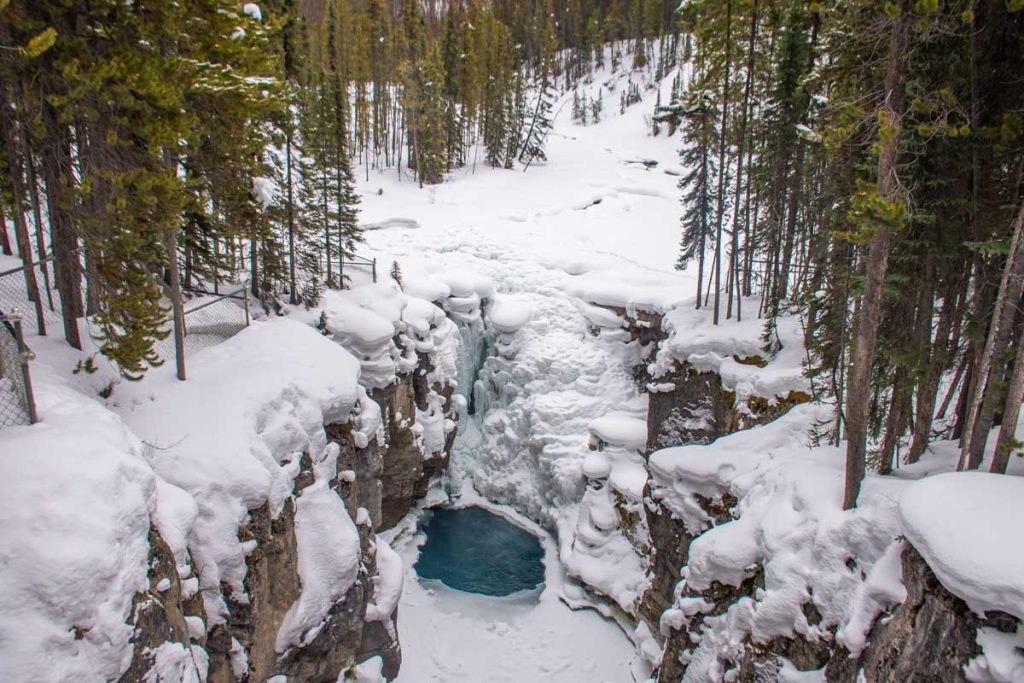
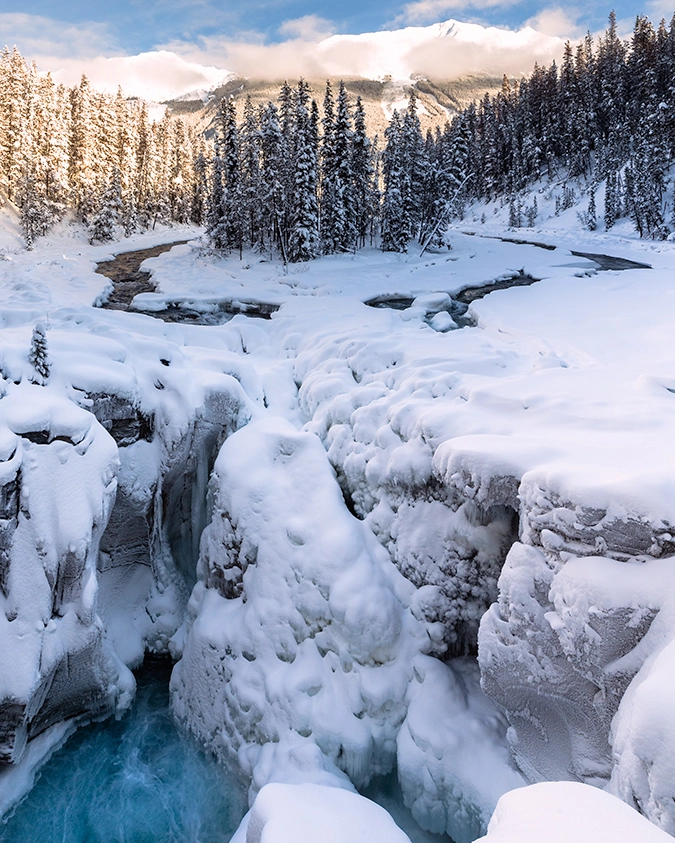
Sunwapta Falls is open year-round, and each season brings a new kind of magic. Depending on when you go, the experience can vary dramatically in terms of water flow, scenery, and visitor numbers.
Summer (June to September)
This is the peak season at Sunwapta Falls, and for good reason. As the glaciers melt, the falls are at their most powerful and photogenic. The weather is mild, the roads are clear, and the trails are dry. You can easily explore both the Upper and Lower Falls without any safety concerns. Expect to see more tourists during midday, so plan your visit in the early morning or late afternoon for the best light and fewer people.
Autumn (late September to October)
Fall is a stunning time to visit. The changing colors of the trees contrast beautifully with the icy blue water, and the crowds begin to thin out. Temperatures are cooler, and the water flow decreases slightly but still offers an impressive sight. You’ll also have a better chance of spotting wildlife like elk and deer.
Winter (November to April)
In winter, Sunwapta Falls transforms into a frozen wonderland. While the road to the falls is usually plowed, the trails can be icy and slippery. Still, the icy formations and snow-covered canyon offer a peaceful, ethereal beauty. You’ll likely have the place to yourself, which makes it ideal for quiet reflection or photography—just dress warmly and tread carefully.
Spring (May to early June)
As snow begins to melt, the river gradually picks up speed. This transitional period offers smaller crowds and the beginning of high water levels. Some trails may still be muddy or partially snow-covered, but it’s a great time for those who want to catch the falls just before the summer rush.
How to Get to Sunwapta Falls
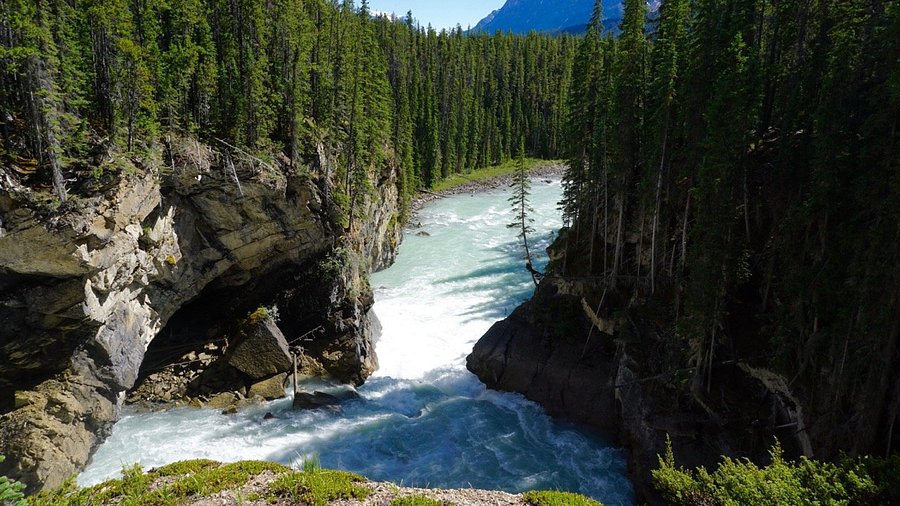
Sunwapta Falls is located on the Icefields Parkway (Highway 93), about 53 km (33 miles) south of Jasper and roughly 179 km (111 miles) north of Lake Louise. This makes it an ideal stop on any road trip through the Canadian Rockies.
Directions from Jasper:
- Drive south on Highway 93 (Icefields Parkway).
- Look for the sign for Sunwapta Falls Rocky Mountain Lodge.
- Turn right and follow the short access road to the parking lot.
There is ample parking, and the Upper Falls are just a two-minute walk from the lot. There are also washrooms, picnic tables, and interpretive signs explaining the geology and history of the area.
Travel Tips:
- There is no cell service on much of the Icefields Parkway, so download your maps ahead of time.
- Gas stations are scarce; fuel up in Jasper before your trip.
- Be aware of wildlife crossings, especially during early morning and evening hours.
- Bring cash or a Parks Canada Discovery Pass, required for entering national parks.
Things to Do at Sunwapta Falls
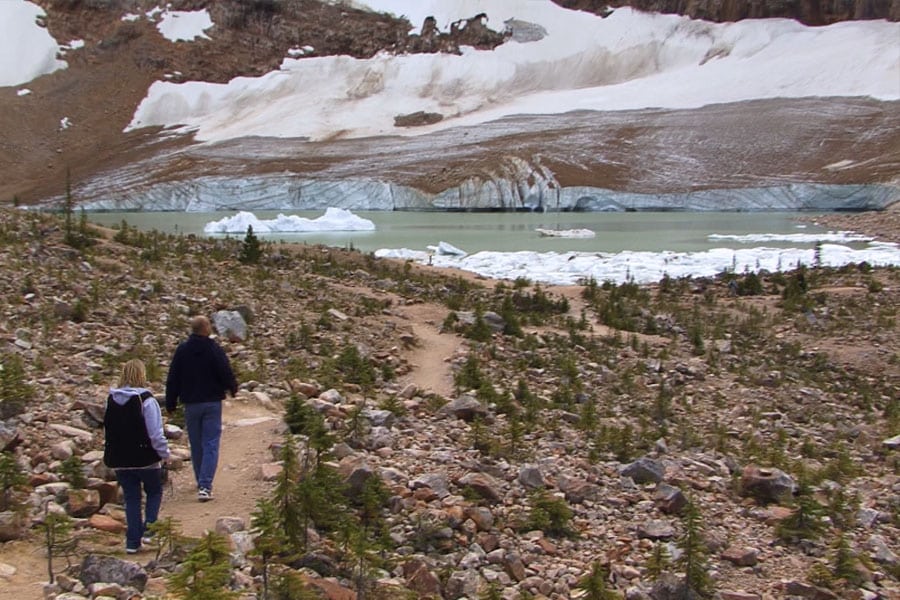
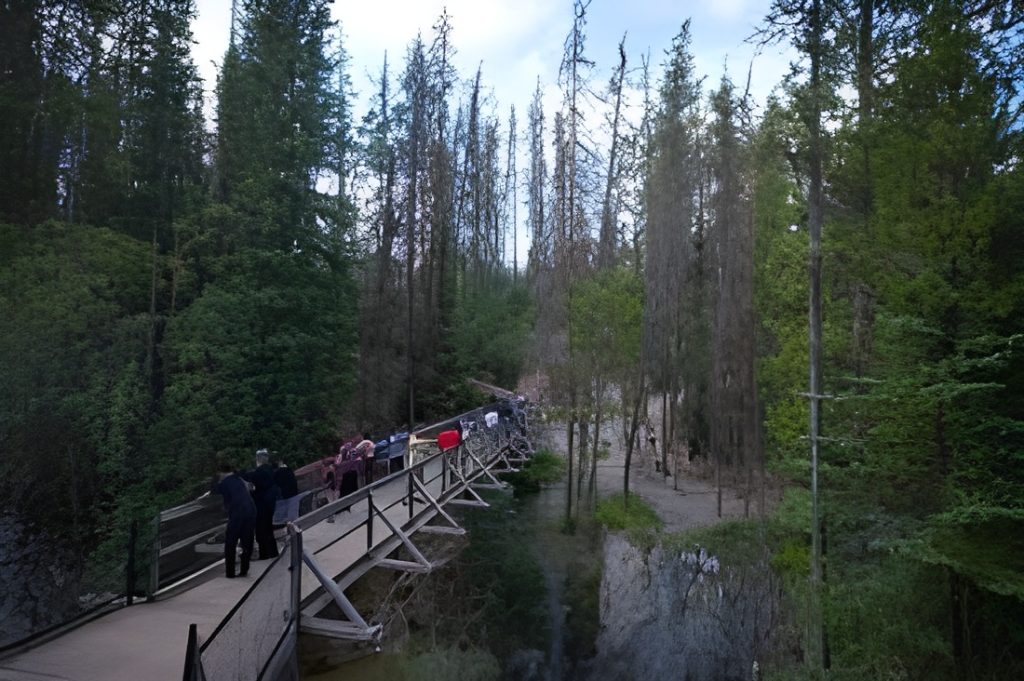
There’s more to do at Sunwapta Falls than just take photos. The area is rich in opportunities for exploration, education, and relaxation.
Photography
Bring a tripod and experiment with long exposure shots to capture the smooth flow of the water. The surrounding pine trees, rocky canyon, and occasional wildlife make for fantastic landscape shots. Sunrise and golden hour offer the best light.
Hiking
The trail to the Lower Falls is perfect for beginner hikers and those looking to stretch their legs. It’s also a great way to get away from the more crowded viewing areas and enjoy the tranquility of the forest.
Picnicking
There are picnic tables near the falls where you can enjoy a quiet meal with the sound of rushing water nearby. Just make sure to pack out all garbage and avoid feeding wildlife.
Stay Overnight
The nearby Sunwapta Falls Rocky Mountain Lodge offers rustic yet comfortable accommodations and an on-site restaurant. Staying here gives you the chance to visit the falls early in the morning or at sunset, when they are least crowded.
Wildlife Viewing
Jasper National Park is home to black bears, elk, mountain goats, and moose. Be alert, respectful, and follow park rules if you encounter wildlife.
Other Nearby Attractions on the Icefields Parkway
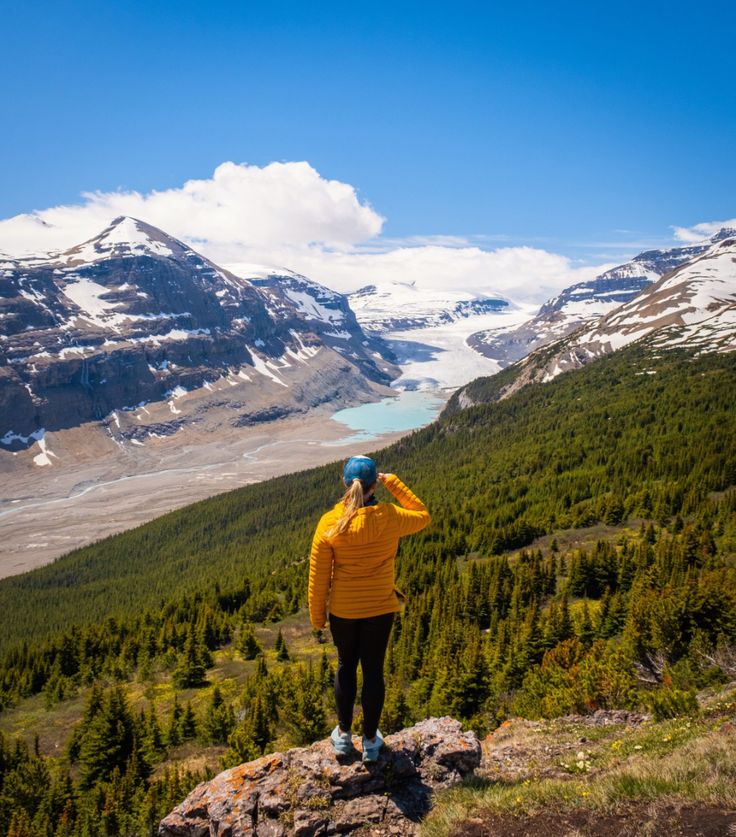
If you’re driving the Icefields Parkway, there are several other stunning places within short driving distance of Sunwapta Falls:
- Athabasca Falls (25 minutes north): One of the most powerful waterfalls in Jasper with incredible force and dramatic rock formations.
- Columbia Icefield (30 minutes south): Home to the Athabasca Glacier and the Glacier Skywalk, a glass platform suspended above the valley.
- Tangle Creek Falls: A roadside multi-tiered waterfall that freezes beautifully in winter.
- Parker Ridge Trail: A moderate hike with sweeping views of the Saskatchewan Glacier and surrounding peaks.
Final Thoughts
Sunwapta Falls is more than just a photo stop—it’s a true highlight of Jasper National Park that captures the drama and tranquility of the Rockies in one unforgettable location. Whether you’re passing through on a road trip or staying overnight nearby, this glacial waterfall is a must-see.
With easy access, seasonal beauty, hiking opportunities, and stunning scenery, Sunwapta Falls offers something for everyone. From the thunderous roar of the Upper Falls to the hidden calm of the Lower Falls, this natural wonder will stay with you long after your trip ends.
